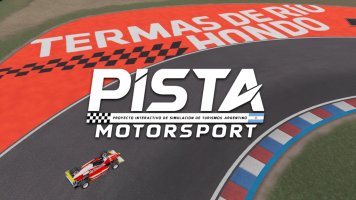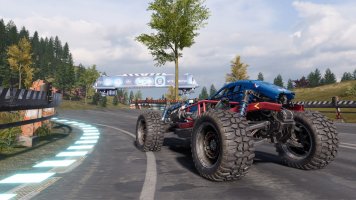Some others may have thier own advice to offer, here is mine...
For Mono BK on the seat and a solution, I was discussing this with an old online friend from Cyprus.
He is seeking to do the same with his Trak Racer profile based rig.
Several people are happy with bolting a BK to the underside of the seat. Its energy will easily cover the whole seat and up the backrest. This, however, gives only one entry point (while direct) for the BK unit's energy to enter the seat. I refer to this as producing a potential hotspot and this area will have the most energy and disperse it over the whole seat.
Let us look at alternative options.
Plates
Others in the past have used steel plate beneath the seat that connects with each seat riser on the left/right. The plate is then isolated beneath connecting to the rig frame. Let's assume a person is considering some form of plate option for below
This plate may be drilled, so it can have a central Mono BK but also drilled that, the plate could be later cut in two if the user then wanted to mount Stereo BK to each of the L/R plates created.
If so, these (having their own pre-drilled holes) the user can avoid each unit's energy mixing into a single plate and each unit's entry point is at each side of the seat (via seat risers).
Yes of course the energy of each unit will mix in the seat but you do have individual effects being positional entering the seat from each opposite side.
A point to also raise here is that dual BK installed in such a way. While it can offer effects with stereo separation by not being on the same single horizontal plate. It can also apply specific effects layers or indeed effects (the user chooses) to both units at the same time. Let's say, impacts or gearchange (non-positional effects) can now be given
twice the potential energy in output and avoiding the central (single unit) hotspot.
Dual units in this scenario can fill the seat better than a single unit will so performance gains are possible. Alternatively, a single unit with its volume cranked is not the same as two units with more moderate volume. Here you can discover the "hotspot" and "improved dispersion" factors.
Hold up, that's not all.
With a good design and implementation, you can have energy entering the seat from the seat risers but also from
underneath too. Giving you additional entry pathways of the unit's energy into the seat rather than one direct application.
Some seats differ in their shapes/molds but how I would personally approach this if it was my own. Is have either profile drilled/bolted to the underside of the seat approx 6" apart. Or if needed shape 4mm aluminum strip/bars to then bolting these to the underside of the seat.
Either way, you can have two metal contacts beneath the seat for the buttocks/thighs that are bolted to the seat and then bolted to the plate/plates if stereo. The BK then bolt to the plate(s) and the energy is delivered now into the seat by
both methods via the seat risers mounts and the seat's underside contact points.
Annnnnndddddddd yet more....
It's possible to even take this approach further by extending the 8020 profile used underneath that it comes out and angles up to offer two parallel extensions to the back of the seat that is then bolted to the shoulder regions.
Simply two profile "L" shaped channels for the tactile energy to flow over.
What this does is again offers another entry point for the BK energy to be purposely channeled into the seat. It will improve the energy felt in the back regions for low frequencies.
I did trials with these ideas/approaches with my own used steel/chrome tubing.
While it is possible and been suggested I have not seen anyone do this with 8020 but it's been shared a few times...
I couldn't even drill, but didn't let that stop me and got creative.
I've tested various configs and ideas but still more to learn and decide on.




 Own previous tests with seat underside & seat back channeled distribution.
Own previous tests with seat underside & seat back channeled distribution.
When you try things you discover and learn what works and what does not work so well.
8020 Frame Solution
Some visual references of past discussions with others on this going back 2-3 years.
I do think its possible to make a superb 8020 solution for this (not specifically as shown below) but talking with some interested and having their own feedback on how to apply such.

Let's consider from here an 8020 solution approach...
Dual "L" shaped profile from underneath the seat to the back. Drilled and bolted into place.
This lets you
attach transducers to specific points or for the energy of a large unit to easily be
channeled into specific seat regions for improved flow.
If the seat has quite a flat bottom and you use 8020, then it's possible to not only have underside - seat back extension arms but also seats supports deliver the tactile using an 8020 support frame.
It's possible to get creative, apply some tests but I can confirm this approach worked well for me with introducing
multiple entry paths for the BK energy to flow into the seat and not only, just one.
These images are old from a previous discussion but is just for a visual reference.
It would not be hard to combine the discussed "L" extensions to an 8020 base section and then attach the BK as well to this frame and then isolated/decoupled from a secondary support frame attached to the main rig.
If anything one of the bigger challenges is having it all fit in with improved isolation and not affect the height ratio between the seat and wheel deck. So one of the factors is lowering the section that supports the seat to allow for decent quality isolation to be installed.
80mm -120mm could also be used to offer nice wide lower deck supports for more substantial isolation options. Then to install the BK onto an upper section to support the seat mounts.
These positions below are only for mono/stereo options not specific placement points. BK could be inverted hanging below the frame.

More detailed analysis could be done with someone willing to get the parts and do a professional installation. Using such ideas, the challenges are not that great but upgraded isolation and perhaps the rig raised more on rubber wheels would also be recommended.

























